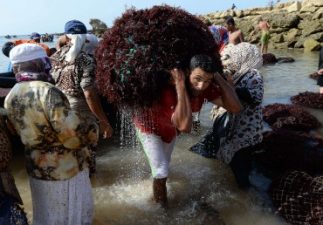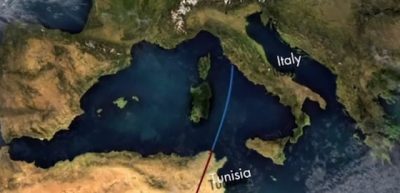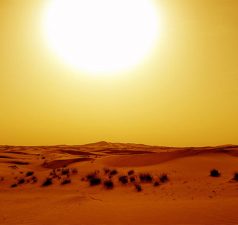163,000 Moroccans who previously had no access to electricity are going solar, thanks to Tenesol.
The world’s poorest two billion people have no access to any kind of electricity at all. Among them are people living in rural Morocco. These households are among the two billion that will greatly add to the world’s environmental problems over the next fifty years if they get on the dirty energy treadmill.
One solar company focused on the problem is the solar manufacturer and project developer Tenesol, headquartered in Lyon in the South of France, with its principal markets in the French Overseas Territories. The French company is helping rural Moroccans go straight to solar by installing 26,000 household solar systems far from the grid.
The world’s poorest leapfrogged the land line telephone (and the telegraph) and went straight to cell phones. If they could similarly bypass the medieval energy technology that damages our climate, all of us will live in a safer future.
So, the smart thing for clean tech companies is to find a way to switch these people on to an energy supply that has staying power in the long run. That is not fossil fuels, but wind and solar power.
Tenesol did it by partnering with Morocco’s National Electricity Office, and with funding from Agence Française de Développement. Temasol, a wholly-owned subsidiary of Tenesol in Morocco since the transfer in 2008 of the respective shares of Total Maroc and EDF EDEV, focuses on decentralized rural electrification activities.
“Rural electrification is a major part of a country’s socio-economic development and this project reflects Morocco’s commitment to assisting and improving rural communities” says Jacques Mathan, export sales director at Tenesol. “Many of the families we work with have never had access to electricity but solar energy is fast becoming the renewable answer to their power needs.”
The company designs, manufactures, markets and operates solar-photovoltaic power systems, making about half of its solar panels in the South of France in Toulouse, where they just tripled production capacity from 17 MW annually to 50 MW annually.
The project will bring solar power to 163,000 people in 26,000 homes in rural Morocco. The project is scheduled to be complete by 2018 and is expected to cost 25 million Euros. The subsidiary company Temasol will supply, install and maintain the systems.
Since these homes are far from any grid, each household’s PV modules will be connected to a battery to store the power generated for use during the night. Temasol also plans to construct solar heating systems and solar generators to power remote telecommunications in Morocco.
Related stories:
Bedouin Women Bring Solar Power To Their Villages
Poor Egyptians Find Innovative Ways to Build Solar Water Heating
Exclusive Pics: Kuraymat – Egypt’s First Solar-Thermal Plant





Xoussef, I found such a tangled mess of vagueness, that I left it at the only “for sure” funding I found – The Agence Française de Développement – but nearly wrote “partial” as you are right, that it does seem possible that there was other funding as well. Thanks for the research help. It is great to have such informed readers here
.
it’s full steam ahead, it’s Kyoto… sorry!
Thanks, Loire, I like you too! In fact, I envy you. In the US, we have half of congress actively sabotaging our attempts to get to the clean energy powered economy, while in the MENA region, its full steam ahead, due to your unobstructed policies and proximity to the EU and its Kyoto Accord, as I noted here:
http://cleantechnica.com/2011/11/07/exclusive-pictures-from-green-prophet-egypts-kuraymat-solar-in-operation/
Susan, I couldn’t get a clear picture of who funded the project either. It’s part of a long range rural electrification programme spanning over a decade and ONE seems to have secured funding from every possible source, including Japanese development agency, African development bank, German cooperation agencies, Kuwaiti government… It could be a power station a dam, a link to the national grid or solar panels. It’s difficult to pinpoint who funded what exactly.
Temasol itself has been working for ONE since 1999 on rural electrification and this seems to be another push to get electricity to the least accessible locations with others to come.
No harm Susan. We still like you and your dedication to covering alternitive energy.
Best regards,
Moroccan reader
Sorry about that. But I have also covered the big deal stories – the 500 MW solar project you refer to, one of the biggest worldwide:
http://www.greenprophet.com/2011/11/desertec-begins-500-mw-moroccan-solar-in-2012/
as well as the fact that Morocco plans to get 42% of its energy from solar by 2020, by far the most ambitious solar plan in the world:
http://cleantechnica.com/2010/04/04/morocco-to-solar-power-nearly-half-its-kingdom/
and here:
http://www.greenprophet.com/2011/08/morocco-first-42-percent-solar/
It is so evident, that this article was written with a very little or no research done about Morocco’s economic strategy and its advanced energy plan, making this micro project sounds like a big deal while not even knowing that one of the largest and more advanced solar plants in the World has just been launched in Morocco which within five years will export electricity to Europe.
Not to mention the errors in the article that the previous reader mentioned.
To sum up: poorly written article, lacking real facts and substance.
Upon googling it I think you may have it right – will check further and if correct include the Islamic development bank and Agence française de Développement as the funding, I had been unable to find who was funding it – its harder for me googling in french. Thank you Xoussef!
Oh, thanks! Will revise real meaning of overseas territories. I know there is a cultural connection though between France and Morocco, am I right?
Oh dear! You make it sound like that company was doing all that out of generosity and kind heartedness! Not to belittle their efforts in adapting the technology and business model, but they are getting paid in full for it (and get to sell the concept elsewhere too). If anyone deserves commendations for this programme it’s ONE that conceived of it, and the institutions that lent money for the programme like the Islamic development bank and Agence française de Développement (among others).
Also, Morocco is not, and has never been, an overseas territory of France. I think you misinterpreted “overseas territories” (real meaning here: http://en.wikipedia.org/wiki/Overseas_departments_and_territories_of_France) to mean having been a protectorate which was over fifty years ago and when you think about it is not particularly relevant. (and we are pretty touchy about the subject, so indignant Moroccan comments guaranteed)
🙂